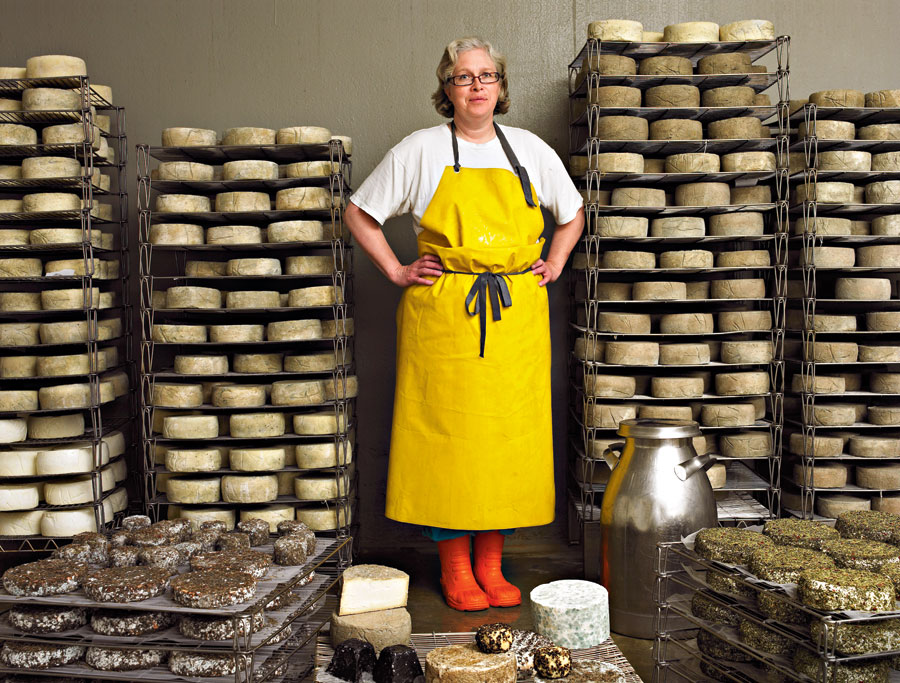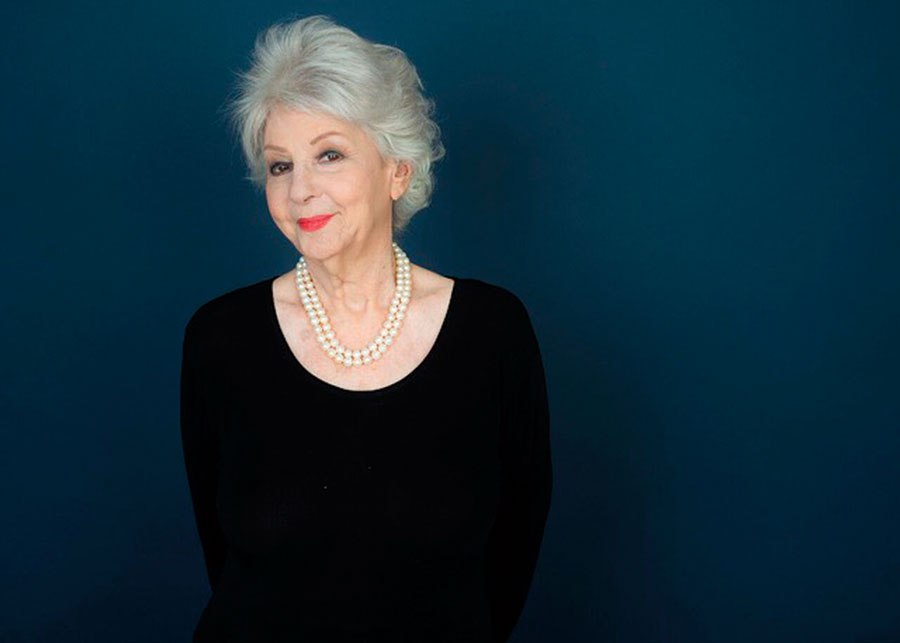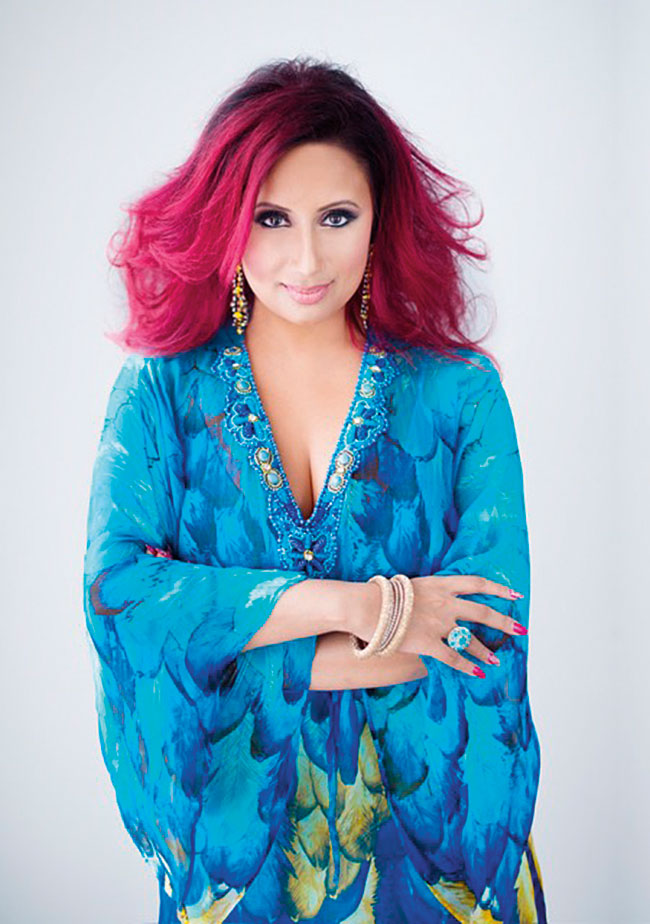Here, we explore the challenging business and economic landscape – and solutions for success for female entrepreneurs.
Cindy Gordon has a million ideas, but delving into why some salespeople outperform others led her to found SalesChoice, an analytics company that relies on artificial intelligence and data science to add to a company’s bottom line.
“Before a sales professional does anything, we can tell them if they’re going to win or lose, scientifically,” says Gordon, who won Startup Canada’s Senior Entrepreneur Award in 2017.
She founded the privately held company in 2011 while in her early 50s and spent four years on research and development, moving through alpha and beta testing to the point where they have applied for a patent and are working with customers.
Gordon doesn’t give a thought to her age, saying she’s just happy to be at the table with her peers. “If there’s a bias, I am moving past it so fast,” she says.
“Maybe doors are being shut, and I’m not thinking about it. I’m just moving on to the next door.”
Baby boomers are poised to make a massive contribution to Canada’s economy through the entrepreneurial ecosystem because, as Gordon says, they’re retiring in droves, and all those workaholic Type A’s are going to be bored. Boomers are training to serve on boards, they’re starting non-profits and they’re setting up new companies.
“Now at least you have possibilities in your 50s and 60s,” she says. “If you wanted to do this 50 years ago, people would wonder what planet you were from.”
As for gender bias, like many female entrepreneurs interviewed for this series, Gordon hasn’t felt any discrimination. Though there has been some Canadian research on the differences between men and women entrepreneurs, there is a dearth of data on older entrepreneurs and even less on experienced women entrepreneurs. That invisibility is due, in no small part, to ageist stereotypes, where next-gen entrepreneurs are widely envisioned as tech geniuses in hoodies, madly coding away in some university dorm room.
That is reflected in a lack of programs, mentorship and financial support for older entrepreneurs, but Wendy Mayhew, CEO of the Ottawa-based company Business Launch Solutions, is trying to change that.
After researching entrepreneurship as an encore career – one chosen later in life more for personal satisfaction than necessity – Mayhew also started Wise Seniors in Business two years ago, which offers resources for experienced entrepreneurs such as speaking engagements, workshops, podcasts and videos. In 2017, she put out a call for applications for the first Wise 50 Over 50 awards and got nearly 100 responses. Mayhew said 38 per cent came from women, 56 per cent came from men and the rest were a mix of partnerships.
Like Gordon, Mayhew hasn’t given much thought to gender discrimination as a 67-year-old woman entrepreneur.
“There have been a lot of times I’ve been turned down for stuff, and is it because I’m a woman or is it my personality, because I am pretty outgoing?” she wonders. “Maybe it is that old ‘because I’m a woman’ thing, so I’ve really started looking at it differently now.”
We know women entrepreneurs are on Prime Minister Justin Trudeau’s radar after he announced the creation of a Canada-United States Council for Advancement of Women Entrepreneurs and Business Leaders following his first meeting with U.S. President Donald Trump in Washington in February 2017. And the same year the prime minister spawned an internet meme – “because it’s 2015” – when he appointed a cabinet that was 50 per cent men and 50 per cent women, the federal government’s Expert Panel on Championing and Mentorship for Women’s Entrepreneurs produced a 15-page report containing recommendations on how to support and encourage women business owners. Then nothing happened. Panel chairwoman, super entrepreneur and Dragon’s Den judge Arlene Dickinson dismissed the whole exercise as “a disappointing waste of time” in an essay for Maclean’s magazine and announced she had started a non-profit accelerator in Calgary focused on launching businesses in consumer-packaged goods, a sector traditionally dominated by women entrepreneurs.
Women are taking it into their own hands, with programs like non-
profit Alberta Women Entrepreneurs making loans and offering advice to small start-ups, as well as SheEO, started by Vicki Saunders of British Columbia creating a self-perpetuating fund that provides members with interest-free loans and a ready-made network of like-minded women.
The landscape has to change fast because women entrepreneurs in Canada had the highest rate of early-stage activity (businesses less than 3.5 years old) in 2016 compared with 16 other countries, including the U.S. and Germany.
The latest Global Entrepreneurship Monitor Canada Report on Women’s Entrepreneurship shows 13.3 per cent of Canadian women are engaged in early-stage business, up from 10 per cent in 2014. By comparison, 20 per cent of men ran early-stage businesses in 2016, a ratio of three men for every two women. The new data, published in December 2017, also puts Canada fifth globally for established business ownership by women at 6.6 per cent, down slightly from 2014.
The only age-related statistics in the report reveal early-stage businesses were dominated by women aged 25 to 44, while the biggest bulge on the graph of businesses more than 3.5 years old was in the 55- to 64-year-old age group.
“That makes sense,” says Karen Hughes, author of the report and a University of Alberta professor who studies entrepreneurship and women’s participation in the labour force. “These are businesses that have longevity; they’ve started them years ago and they’re established.”
As for what motivates older women entrepreneurs to go into business, Hughes says the report probed attitudes toward entrepreneurialism, which were highly positive in both men and women and showed that just over 80 per cent of early-stage entrepreneurs started a business out of opportunity rather than necessity regardless of gender, but it didn’t drill down on differences between age brackets. “It’s an area ripe for exploration,” she agrees.

Alone at the Table
Taking on ageism, access to capital and networking.
Mayhew of Business Launch Solutions and Wise Seniors in Business was speaking to a guest at an event last year. When she said she had recently switched her focus from entrepreneurs in general to older, experienced entrepreneurs, the man put on a slobbering face and pretended to walk with a cane.
“It was thoroughly disgusting,” says Mayhew. “I had done some business referrals to him but, after that statement, I quickly advised he wouldn’t be getting any more.”
Mayhew says a report from the U.S. covering 104 countries, including Canada, shows experienced entrepreneurs are the fastest growing demographic. But ageist tropes prevail, not least of which is the out-of-touch, befuddled, middle-aged technophobe who calls the help line only to find the computer isn’t even plugged in. Add to that, well-documented barriers to women in business, such as trouble getting access to capital, lack of mentors and spotty networking opportunities, and it all adds up to long odds for women of a certain age who want to start a business.
That has to change because the economic potential of women in business is enormous. In a 2013 report by the Royal Bank of Canada, the estimated contribution of woman-run small- and medium-sized enterprises, which make up 15.6 per cent of all SMEs in Canada to the economy, was pegged at $148 billion.
That’s why SheEO’s Saunders started the non-profit organization, now a network of 500 businesswomen who paid $1,100 into a perpetual non-profit fund that makes interest-free business loans to five high-potential member businesses each year. Though they don’t ask the age of members, Saunders says it ranges from 30s to 70s. She knows from personal experience as a serial entrepreneur that the playing field is not level when it comes to women running businesses.
“I witnessed 25 years of having an incredibly difficult time getting funded, difficulty getting into the door of a lot of places and feeling like I didn’t fit in,” says Saunders, who has co-founded four business ventures in Toronto, Europe and Silicon Valley before starting SheEO five years ago at age 50. “Something happens when you turn 50. You stop caring about trying to fit in and be the norm because we’re not the norm.”
Saunders says the SheEO network has uncovered some “completely missed opportunities” in the form of revenue-generating companies that pay back debt on time. “No one is paying attention. Everyone is chasing a unicorn,” she says, referring to the term used to describe a start-up company valued over $1 billion.
Women-led businesses get to profitability quicker and are much more efficient with their capital because they are used to going without and doing more with less. “We tend to run revenue-generating businesses because we can’t get funded,” Saunders says.
And when it comes to experienced women entrepreneurs, she agrees that society is deeply ageist, and that is reflected in government programs that support economic development.
“As soon as you’re 39, you’re done, and if you’re a woman, you’re invisible when you hit your 50s,” Saunders says. “There’s nothing out there, and it’s a massive, massive market if you look at this aging population who have capital, who have ideas and creativity. And it’s completely untapped.”

A Room of Her Own?
Ruth Klahsen was 47 when she started Monforte Dairy, an artisanal cheesemaking business in Strat-ford, Ont. Because she knew the business was too high risk to ever get a loan from a bank, she came up with an innovative way to fund a new dairy. Every customer could buy a future and, in return, they get a share of cheese. This year, she needs to make $2 million in sales and futures in order to make a profit.
Cheesemaking was historically women’s work, as it was part of the farm family’s diet. But when it moved from farm to factory in the late 1800s, men took over. It wasn’t until about 15 years ago, when an artisanal cheese movement was born in Ontario, that women reclaimed the hairnets and the cheese moulds.
Klahsen, now 60, finds it hard to describe what she feels when she sees a cow with a calf, a mare with her foal or a ewe with her lamb. “There is nothing more that makes me smile than something suckling,” she says. “It’s just something that is part of our DNA.”
Women-run businesses have always clustered in retail and personal services related to food, health and beauty. In 2016, a little more than half of the early-stage entrepreneurial activity by Canadian women was in consumer services, while business services, which tend to be more profitable and stable, were next at 28.2 per cent, according to the latest Global Entrepreneur Monitor Canada report on Women’s Entrepreneurship, published in December 2017.
For established businesses more than 3.5 years old, the split was about 40-40, with the rest of the businesses in the “transformative sector” (manufacturing) and extraction (natural resources).
“Entrepreneurship is part of the overall economy and labour market, and so we’re seeing the same patterns in gender segregation that we see in traditional employment,” explains University of Alberta’s Hughes.
The big surprise was the more detailed global data that showed Canada had the highest concentration of early-stage, women-led businesses in the information and communication technology sector at 7.6 per cent, with the next highest activity rate of 5.5 per cent in the U.K. and 4.4 per cent in Ireland, which is good news for a knowledge-based economy.
For Klahsen, who has seen three new farm-based dairies run by men open within a 20-minute drive in the past five years, cash flow is still a struggle after all these years.
The copycat competition bugs her, and she sees the parallel between the decline of cheesemaking on the farm and her situation today. “When it looks viable as a business, men get interested.”

How She Does It
Elizabeth Grant, 95, founder and CEO of Elizabeth Grant Skin Care, Toronto.
Elizabeth Grant has U.S. movie star Patricia Neal to thank for her start in the skin-care business. The actress was working on The Hasty Heart with Ronald Reagan at Elstree Studios near London when she complained to the young makeup artist about the ravages of heavy cosmetics and complimented Grant on her flawless complexion.
Grant gave Neal a sample of the skin cream she had developed from a seaweed used by doctors to treat war wounds. She was living proof it worked; Grant’s face had been scorched by a German V2 rocket in London in 1944.
When Neal returned to the set a few weeks later, she told Grant the cream was amazing and asked where she could buy some. “Those were the magic words,” says Grant, 95. “I was stunned. It had never occurred to me to sell it.”
The seed was planted for Elizabeth Grant Skin Care, a Toronto-based business with $20 million in sales revenue and 45 full-time employees. By 1958, England had recovered from the Second World War, and Grant found a factory to manufacture her skin cream. The business expanded by word of mouth, with Grant as the face of the company and her husband, Sydney Witz, handling the books, but Grant shuttered the business in 1994 when Sydney passed away.
After Grant followed her son Paul to Canada, daughter-in-law Marion Witz floated the idea of reviving the company. In 1999, with a $5,000 line of credit from the Royal Bank, the company was reborn in Witz’s Toronto basement, and teenaged granddaughter Margot Grant Witz pitched in after school with packaging and labelling. “You don’t know me from a bar of soap,” was Grant’s opening line on The Shopping Channel, “but I’m going to change your life.” Needless to say, the first run of two face serums sold out.
With Grant, a charming raconteur and a one-woman sales tour de force as the CEO, Witz, 67, as president, and Grant Witz, 33, as vice-president, the luxury brand still dominates sales on Shopping Channels around the world. Grant’s original formula goes by the trademarked name Torricelumn, and the brand now boasts 250 products.
“My grandmother always told me it doesn’t matter what’s between your legs, it’s what’s between your ears,” says Grant Witz. When asked what the future vision is for the company, Marion Witz says simply: “Margot is the vision.”
Beatrice Floch, 59, owner and managing partner of Spirit Staffing, Edmonton.
Beatrice Floch moved from Winnipeg to Edmonton in 1979, applied for five jobs and got three of them. For almost 20 years, she sold steel tubular pipes for pipeline supply companies and then switched gears and became a pipeline estimator.
By 2003, she had built up a lot of contacts in the oil and gas industry and, at 45, she was starting to feel too old for the job. There was a lot of travel involved in estimating pipeline costs, and her younger colleagues always wanted to go to the bar or out for pizza after work.
“Alberta was going pretty strong with $350 billion in projects upcoming and a shortage of technical workers,” she says. “I saw an opportunity to open my own business.”
Her younger sister had started an employment agency in Calgary in 1998, catering mainly to white-collar clients and connecting First Nations workers with jobs in the city. Floch opened an Edmonton branch of Spirit Staffing with her sister’s blessing and a $28,000 loan from Alberta Women Entrepreneurs, a not-for-profit that helps women build successful businesses. “We chugged along for three months without making a nickel,” Floch recalls. “I was really frugal and I worked around the clock.”
When the bottom fell out of the oil and gas sector, Floch got another $100,000 loan from AWE in January 2017 to switch tacks and train workers in safety certifications like working in confined spaces and fall protection; the loan will be paid off within the next month or two. Though there are few production jobs, all plants hire hundreds or even thousands of workers for routine maintenance. Last year, Floch placed 144 workers at a job site, and 67 of them were of aboriginal descent.
As a Métis born in Roblin, Man., to a Cree-speaking mother, an important part of Floch’s work is helping First Nations in Western Canada get the jobs in their backyards.
The company has grown by 500 per cent, but cash flow is a constant worry, her old contacts are retiring, she feels overwhelmed by new technology and the boom-bust cycle is taking its toll.
“The older you get, the less energy you feel,” says the 59-year-old. “It’s like, ‘Oh, my goodness, here we go again.’ I’ve been working in this industry since 1979 and I’ve seen 2,000 people in a day laid off.”

Raj Girn, 47, president and CEO of Anokhi Media, Toronto.
Raj Girn was 32 and newly divorced with a five-year-old when she decided to start Anokhi Media, which gets its name from the Hindi word for unique.
She was convinced there was a need for a magazine that spoke to an audience that looked like her: brought up in the West but still very much connected to South Asian culture.
“Media at that time was monochromatic. It was either mainstream media, which didn’t talk about the ethnic culture I was brought up in, or cultural, which didn’t really talk about the Western society we lived in,” she says of the industry in 2002 when she launched. “I felt one without the other was incomplete to who I was and who many were, who like me, resided in a dual cultural environment.”
With $36,000 raised from angel investors and capital from cashed-in RRSPs and a second mortgage, she published the first issue. Canadian actress Lisa Ray was the cover story.
Girn knew she had to bootstrap it because she didn’t fit the typical mould of a businesswoman. She describes her look as flamboyant – “It’s part of my culture. Hello, Bollywood,” she jokes – and figured no bank would back a woman, let alone one who belonged to a visible minority and wanted to start a risky media enterprise.
Fifteen years later, the internet and social media have caused a seismic shift in the media landscape, and it now favours niche players. Anokhi has diversified and, in addition to its monthly digital magazine, the multimedia company runs a website covering South Asian pop culture, lifestyles and entertainment, with three video channels and a blog, as well as an events business and an annual awards show.
Girn first broke even in 2013 and has yet to turn a profit, but says the Anokhi brand is No. 1 in the North American marketplace in terms of brand awareness.
At 47, Girn has enough experience and social capital to be taken seriously as an entrepreneur.
“I have substantial resources because of the relationships I’ve built over the years and how much I’ve done within and for my community with the various Anokhi offerings. So when I want to start a new product, I have places I can go for assistance.”
This article first appeared in the March 2018 issue with the headline, “If She Builds It…”, p. 54-59. All information was accurate at the time of publication.
